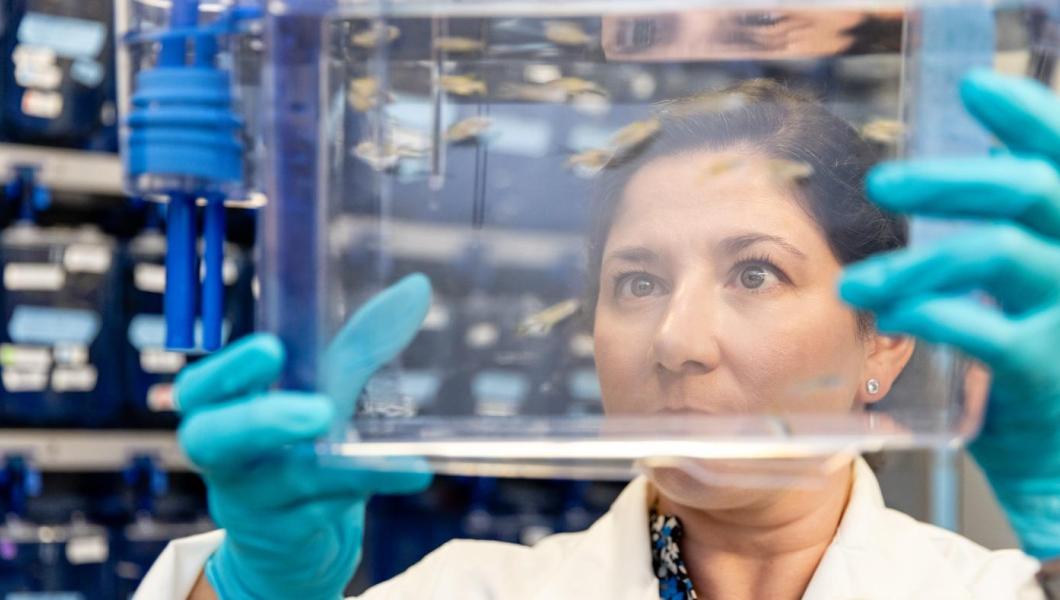NJIT Prof. Wins NSF CAREER Award to Study Quantum Material for Next-Gen Electronics

NJIT Assistant Professor of Physics Junjie Yang has won a National Science Foundation’s (NSF) CAREER Award to explore the unusual properties of quantum materials that hold the potential to propel the next generation of smaller, more energy-efficient electronic devices.
The CAREER Award is among NSF’s most prestigious awards in support of early-career faculty who have the potential to serve as academic role models in research and education, and lead advances in the mission of their department or organization. Approximately 500 awards are issued each year nationally.
As part of his five-year grant project, Yang’s lab is investigating complex atomic vibrations within hafnia-based (Hf02) crystals, which give rise to the material’s extraordinary physical properties now being explored by physicists and engineers for designing less power-hungry computers in the future.
“It is an honor to receive the NSF CAREER Award,” said Yang. “It’s exciting, as this award will bolster our group’s research efforts to investigate the microscopic origin of special electric properties found in hafnia bulk crystals … a key step to unlocking this scientifically important material’s potential.”
The hafnia-based crystals are part of a group of quantum materials known as ferroelectrics — materials noted for exhibiting a spontaneous internal electric charge, or polarization, that can be switched when exposed to an external voltage source, such as a battery.
“The two switchable states of spontaneous polarization can be considered the logic ‘on’ and ‘off’ states,” explained Yang. “Once set, the polarization is a non-volatile property unlike current silicon-based memory devices, where a power outage can result in loss of stored information. Also notable is speed … the read/write operation of the polarization can be less than one nanosecond.”
Yang says the material’s electric polarization offers a promising alternative to voltage requirements of today’s silicon-based computer chips, potentially enabling the development of ultra-low power microelectronics and pushing the limits of Moore’s Law. In the 1960s, Intel co-founder Gordon Moore predicted that the number of transistors on computer microchips would double every two years, driving the rate of computer performance and miniaturization.
“It is promising but there is still a lot that is unclear about how ferroelectricity arises in this material, which has hindered the development of hafnia-based devices until now,” said Yang. “We aim to fill an important gap in understanding by characterizing how atoms vibrate in these crystals. These vibrations play an essential role in the material’s ferroelectricity.”
To learn more, Yang’s team is exploring the activity of phonon particles that carry the natural vibrations of hafnia-based bulk single crystals. Yang’s team will investigate such vibrational activity by applying neutron scattering techniques at state-of-the-art research facilities, such as those at Oak Ridge National Laboratory and NIST Center for Neutron Research.
Ultimately, the project aims to build upon current scientific understanding of hafnia-based ferroelectric materials, and could aid the synthesis and fabrication of new ferroelectric quantum materials for future applications.
The project will also integrate the research activities with education at all academic levels (K-12 students, undergraduates, and graduates) to train the next generation of physicists and materials scientists. Yang collaborates with the Liberty Science Center, Franklin Mineral Museum, Rutgers University and local high schools, and develops a “Natural Minerals & Quantum Materials” educational project that provides learning opportunities for K-12 students.
Funding from the award totals $57,762, running from July 2023 to 2028.

